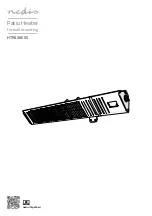
Heating jacket for Promass A, E, H, I, M, S, P
Installation
Hauser
7
3
Installation
3.1
Incoming acceptance and transport
3.1.1
Incoming acceptance
On receipt of the goods, check the following points:
• Check the packaging and the contents for damage.
• Check the shipment, make sure nothing is missing and that the scope of supply matches your
order.
3.1.2
Transport
Transport the devices in the containers in which they are delivered.
3.2
Installation conditions
3.2.1
Dimensions
The dimensions are to be found on Page 7.
3.2.2
Temperature ranges
Temperature ranges of the heating medium find you on Page 10.
Heating medium – Operating temperature
"
Caution!
• Always select the orientation of the sensor and the heating jacket so that the maximum ambient
temperatures for the measuring electronics are not exceeded Page 10.
• With additional heating jacket insulation, always keep to the minimum safety distances to the
device
→
Page 13 ff.
• Keep to the following ambient temperatures depending on the design of the measuring system:
The material load curves (pressure-temperature diagrams) for the heating jacket are to be found on
Page 12
Device version
Max. ambient temperatures
Compact version
Transmitter: m60 °C (+140°F)
Remote version (standard
version)
• Connection housing: m60 °C (+140°F)
• Operating temperature of connecting cable: m105 °C (+221°F)
Remote version for heating
(long-necked version)
Always use the long-necked version when the max. ambient temperature of +60 °C
(+140°F) for using the standard remote version cannot be kept to. The long-necked version
has a housing support for the thermal separation of sensor and transmitter.
This version is used, for example, for applications in which very high fluid and heating
medium temperatures are encountered.







































